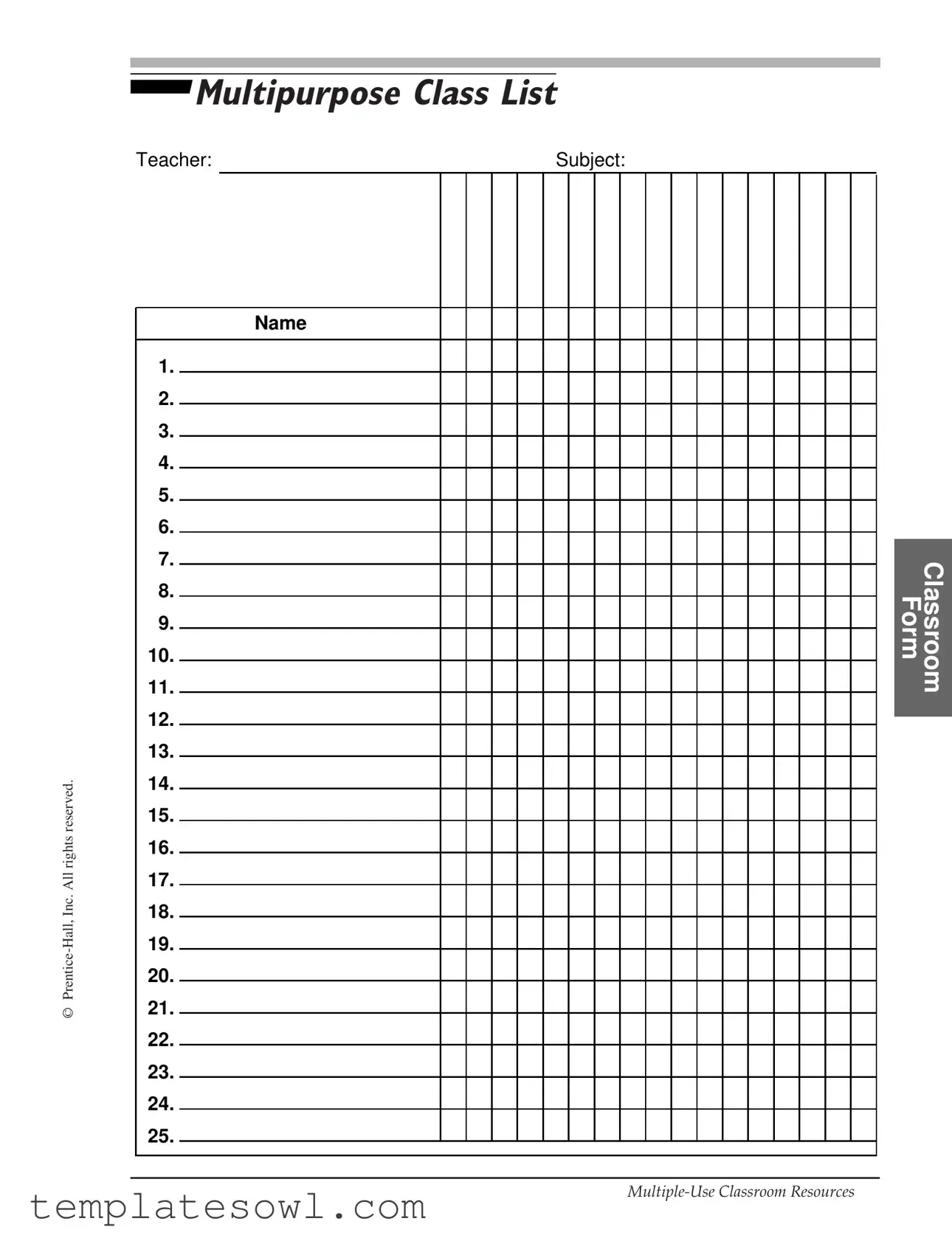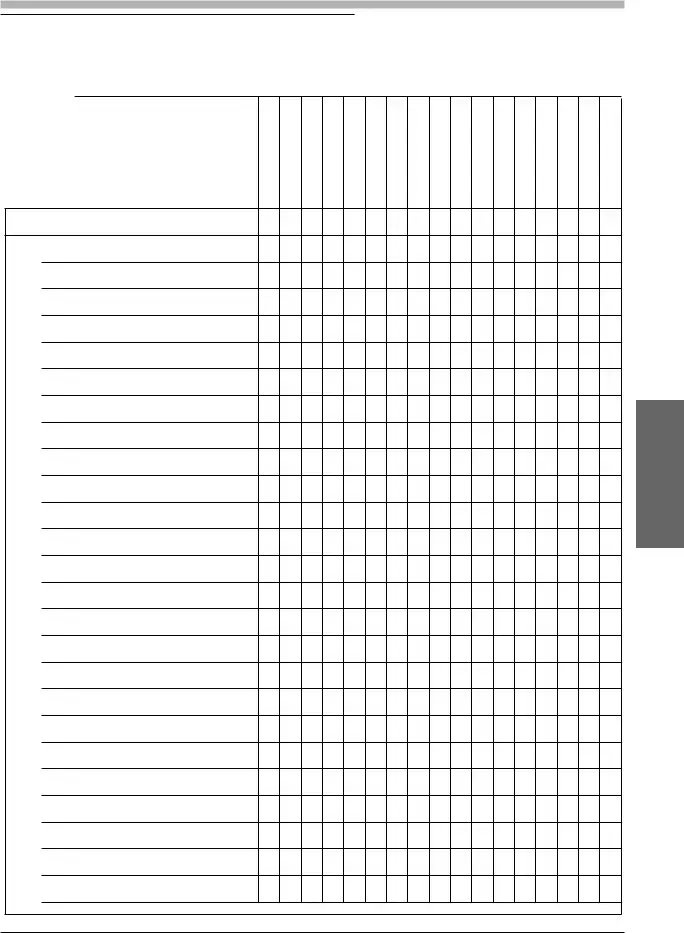What is the purpose of the Class List form?
The Class List form serves as an organizational tool for educators to keep track of students enrolled in a specific class. It provides a structured format that includes space for the teacher’s name, subject, and a list of student names. This helps in managing attendance, grading, and classroom dynamics more effectively.
Who can use the Class List form?
The form is primarily designed for teachers and educational administrators. However, any educational institution that requires a systematic way to manage student information in a classroom setting can utilize this form. It can also be useful for substitute teachers who need to quickly familiarize themselves with the class roster.
How should I fill out the Class List form?
Start by entering your name and the subject you are teaching at the top of the form. Next, list the names of the students in the space provided. Depending on your preference or the specific needs of your classroom, you may choose to arrange the names alphabetically, by seating arrangement, or any other method that suits your needs.
Is there a limit to the number of students I can list on the form?
The Class List form provides space for up to 15 students. If your class exceeds this number, consider using additional forms or supplemental documentation. This ensures that all student names are captured while maintaining organization.
Can I make copies of the Class List form?
Yes, you can make copies of the Class List form for your personal use or for distribution within your educational institution. Keeping multiple copies can be beneficial for the various classes you teach or for record-keeping purposes over time.
What should I do if there are changes in student enrollment?
If there are changes in student enrollment, such as students moving in or out of the class, you should update the Class List form accordingly. Cross out names of students who have left and add new students as needed. It is essential to keep this information current for accurate attendance tracking and communication.
How can the Class List form aid in classroom management?
The form helps educators create an organized classroom environment. By knowing who is in the class and having a clear list of student names, teachers can manage attendance effectively, facilitate group activities, and ensure that all students are accounted for during emergency drills.
Are there any privacy considerations when using the Class List form?
Yes, privacy is an important consideration. When filling out and distributing the Class List form, be mindful of the information being shared. Ideally, use the form internally and restrict access to individuals who require the information for legitimate educational purposes. Follow your educational institution’s policies on student data privacy to ensure compliance.


 Multipurpose Class List
Multipurpose Class List